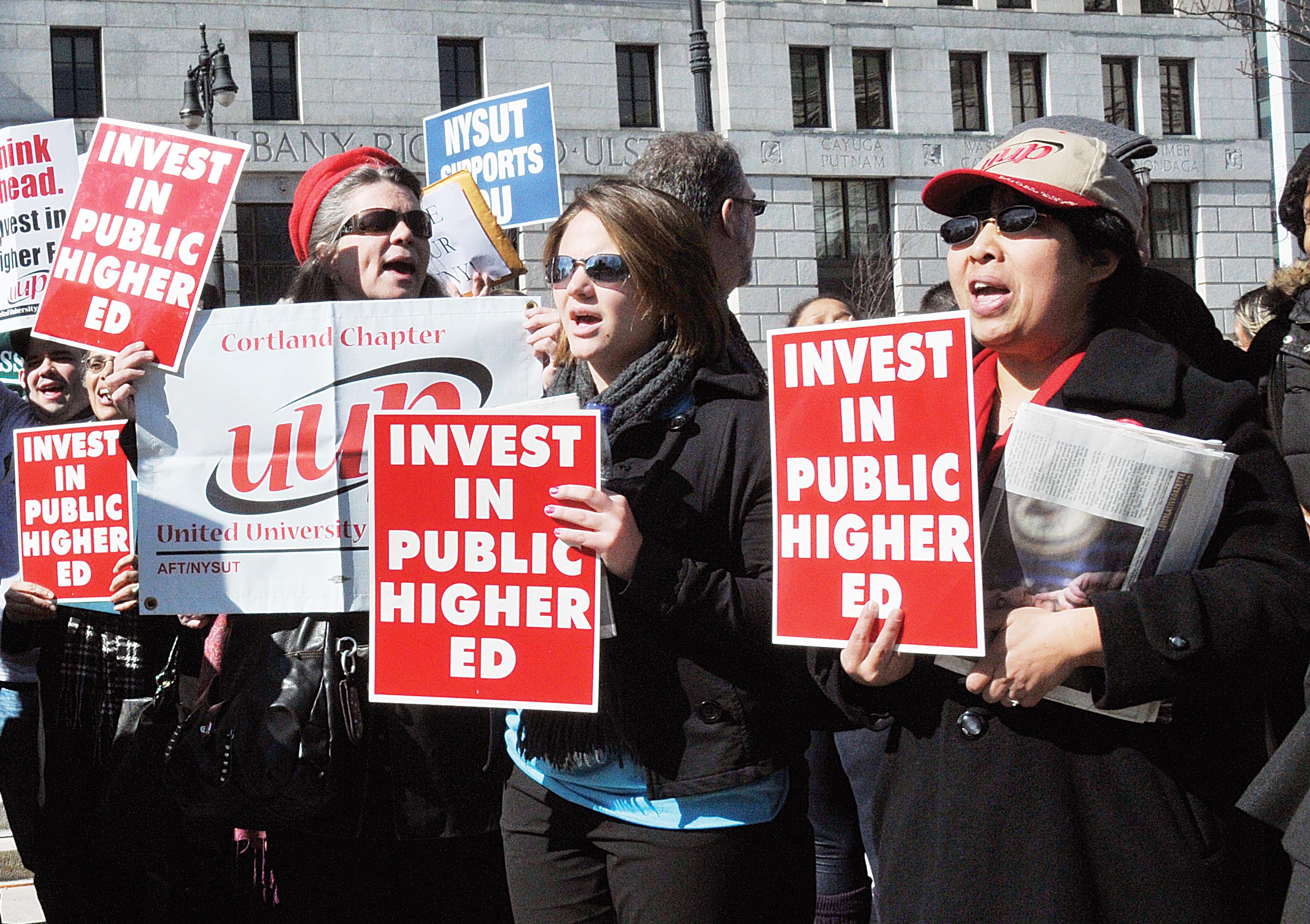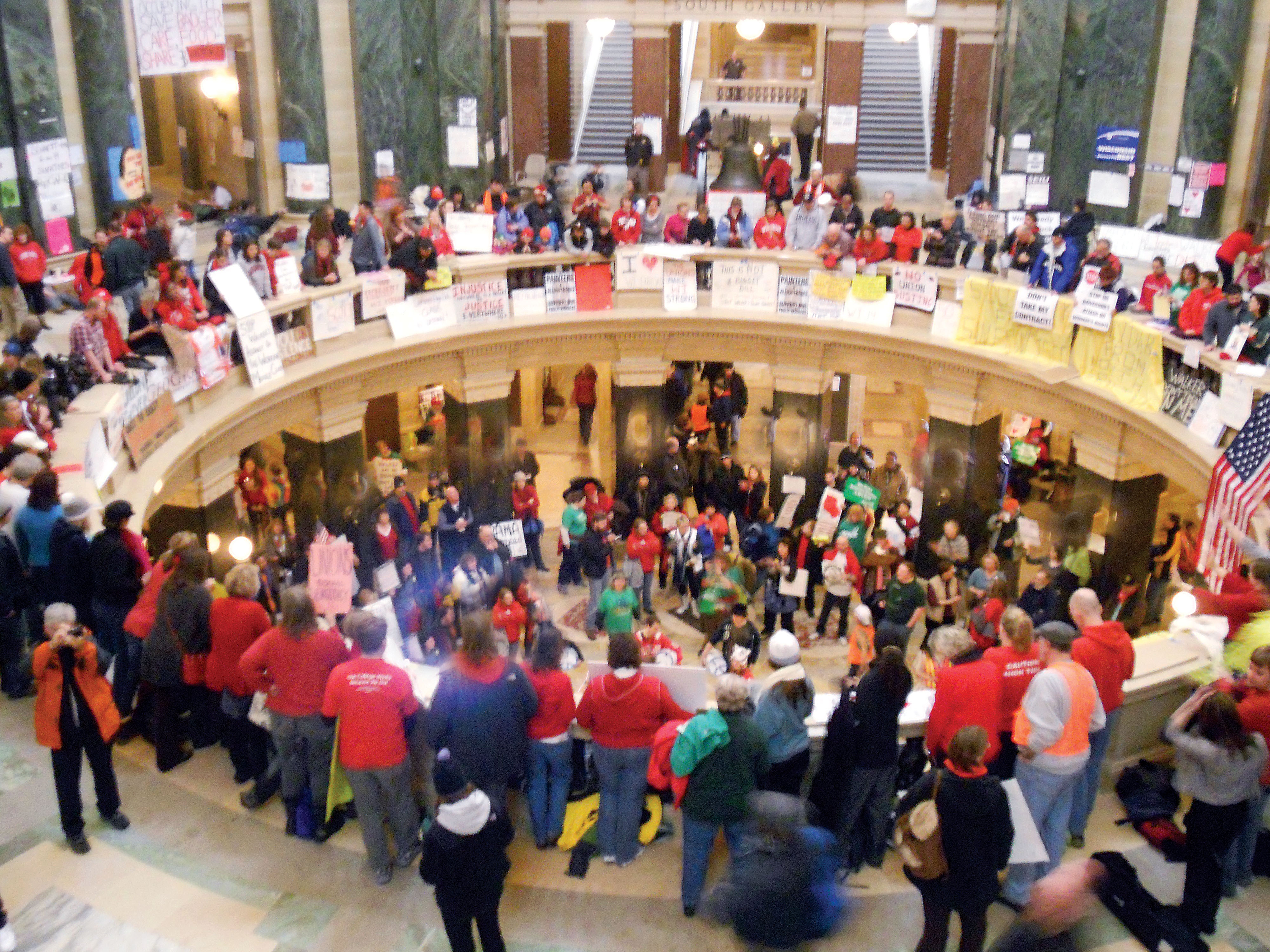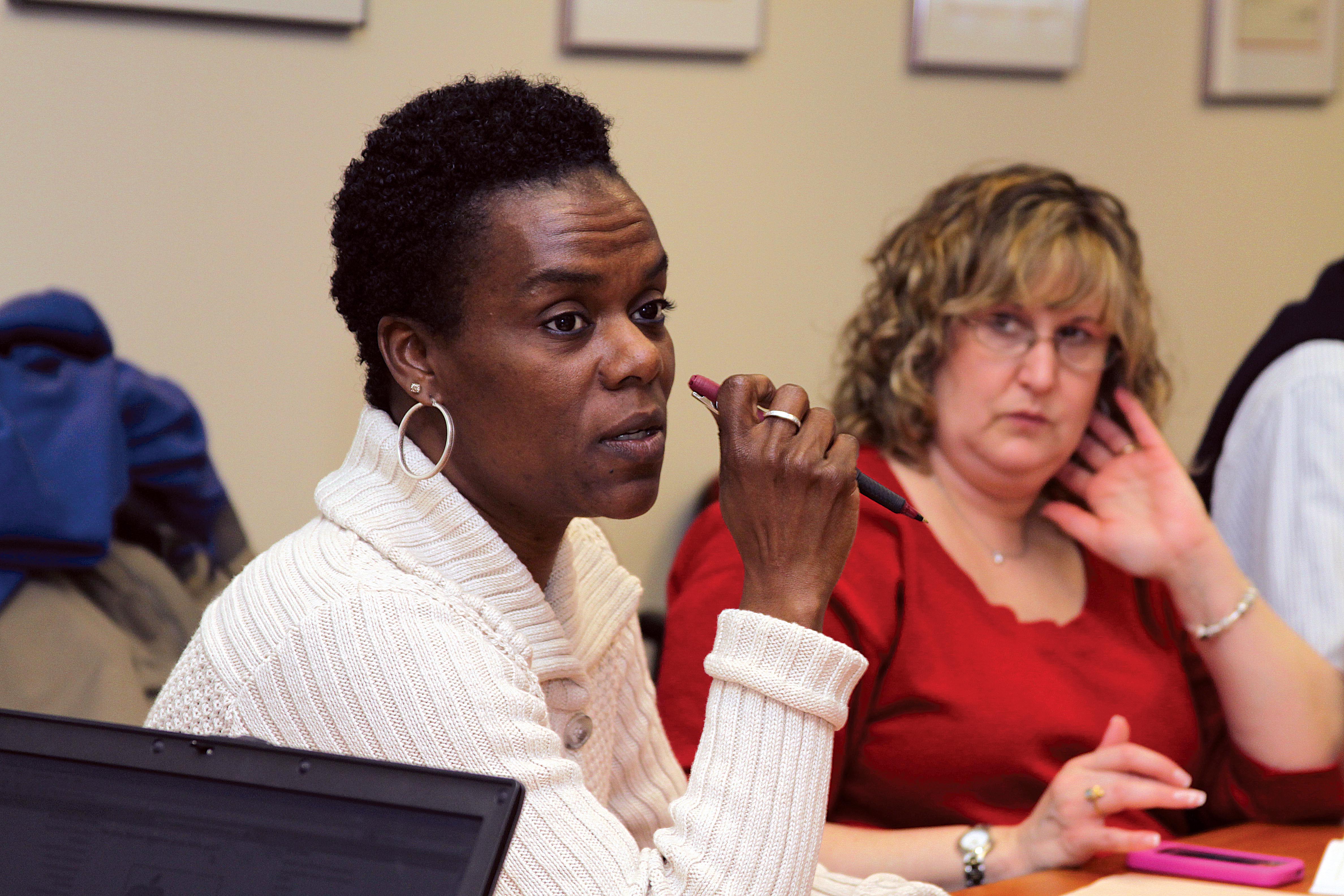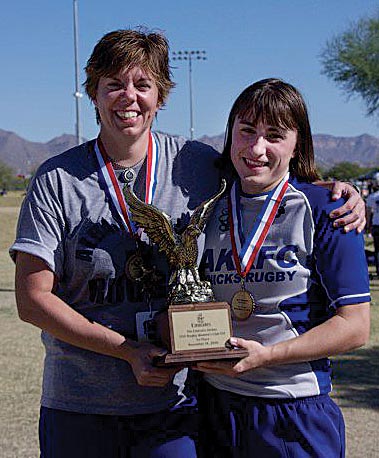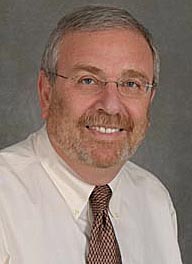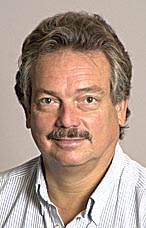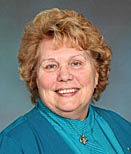- UUP is ‘pulling out all the stops’
- Battle for the ages
- On the air and in the streets
- NYers stand with public employees
- Negotiations: UUP crafting proposals to present to state
- Our givebacks: Hard knocks, helping hands
- White House taps, honors members
- Spotlight on UUPers
- In other words: VP for Professionals John Marino Turn anger into action
- NYSUT Benefit: Legal Service Plan is there when it’s needed
- UUP benefit: Union offers dental, vision plans for part-timers
UUP is ‘pulling out all the stops’
|
Here’s one thing you don’t get as president of UUP: a crystal ball. So, as The Voice goes to press, it’s impossible to say if New York will have a new state budget by the April 1 deadline. However, all signs point in that direction. I don’t need to be a clairvoyant to say this: UUP has been running a full-court press to restore the $100 million in state budget cuts earmarked for SUNY in Gov. Cuomo’s Executive Budget. We’ve also kept up the pressure on lawmakers to return $154 million in state aid to hospitals and restore millions in Medicaid funding that the governor shortsightedly cut from his proposed budget. Our state representatives are seeing things differently in this area, thanks in large part to UUP’s efforts; the Senate is calling for a $115 million restoration, while the Assembly advocates a $64.3 million restoration. Rest assured we will continue to push legislators to invest in public higher education and reconsider hospital cuts, no matter the odds or what the latest news reports say. As I told a reporter over the din of hundreds of SUNY and CUNY students shouting to save public higher education at the Capitol March 15, this game isn’t over. As a wise old Yankee once said, it ain’t over till it’s over. PULLING OUT THE STOPS Our push for SUNY has been a multi-faceted one that began in late January with the first in a series of weekly Albany advocacy days—that won’t end until the budget is passed. Hundreds of UUPers from all corners of the state came to Albany to tell elected officials how more than $585 million in cuts to SUNY over the past three years have impacted campuses. Members from Brooklyn HSC, Buffalo HSC, Stony Brook HSC, and Upstate Medical University chapters warned lawmakers that cutting state funding to SUNY’s three public hospitals and medical schools would be catastrophic, especially to uninsured and underinsured patients who rely on the hospitals for vital services. While we held rallies at the state Capitol to bring attention to the proposed SUNY cuts, we took things a step further this year. IN STEP WITH STUDENTS In March, we joined with students from SUNY’s Student Assembly and CUNY’s University Senate, at a Student/Faculty Higher Education Action Day at the Capitol. Nearly 500 students, faculty and public higher ed supporters from UUP, NYSUT, the Professional Staff Congress, and the New York Public Interest Research Group took part in the event, which started with a boisterous march to the Capitol and ended with a press conference. It was a great way to get our message across and an exciting day for SUNY. ON THE AIR, ON THE WEB What we didn’t do in person, we did with airwaves and ink. We saturated the state with our message in March with an extensive advertising campaign that included TV and newspaper ads, billboards and Long Island Rail Road transit posters. The two-pronged campaign was focused on restoring budget cuts to SUNY, and our hospitals and medical schools. The 30-second TV spot was particularly effective. It featured a student who looked like he was packing for college. In reality, he was packing his dorm room to leave college; state budget cuts made it impossible for him to get courses needed to graduate on time, forcing him to stay an extra year in school—which his parents couldn’t afford—or leave without a degree. We also revived our saveSUNY.org micro-website, a treasure trove of information about proposed state aid cuts to SUNY and how important SUNY is to New York and New Yorkers. NEVER SAY NEVER If you’re reading this and the final 2011-12 budget has restored state cuts to SUNY, thank you for your hard work. If the budget doesn’t restore the cuts, then we’ve got our work cut out for us. Scores of you heeded the clarion call and joined the battle to save SUNY. But we need you to keep doing what you’ve been doing: spreading the word that public higher education must be a priority in New York. Keep visiting, calling and e-mailing your state representatives. Go to saveSUNY.org and sign our petition, and tell your friends to do the same. Keep making it clear to lawmakers that state public higher education cuts must end. New York can’t cut itself out of this crisis. It needs a strategy that builds and invests in public higher education, not one that tears it down. |
Battle for the ages
|
Wherever they turn, lawmakers are seeing, hearing UUP’s message Chanting “Fight! Fight! Fight! Education is a right!” UUPers lent their voices to a student/faculty march that brought together nearly 500 SUNY and CUNY students, faculty, unionists and other education supporters with a common goal: to urge lawmakers to invest in public higher education. The March 15 rally kicked off the Student/Faculty Higher Education Action Day, sponsored by the SUNY Student Assembly, the CUNY University Senate, the New York Public Interest Research Group, NYSUT, UUP and Professional Staff Congress/CUNY. Marchers spent the afternoon meeting with legislators to urge them to reject Gov. Andrew Cuomo’s proposal to slash funding to SUNY, CUNY and commu-nity colleges. Afterward, they gathered at the Capitol for a joint news conference with speakers from the six organizations involved in the event. UUP President Phil Smith told the crowd to keep up the good fight. “Will we stand strong and demand a stop to state cuts?” Smith shouted. “Will we demand that public higher education be a priority in New York? Let’s make it clear to lawmakers that state public higher education cuts must end.” The student/faculty march came on the heels of an aggressive, multifaceted advocacy campaign designed to rescue SUNY from perhaps the most serious academic and financial threat it?has faced since its inception. Advocacy efforts included President Smith testifying before the Legislature’s higher education committees, a half dozen UUP-sponsored advocacy days in Albany, and meetings with lawmakers in their district offices. SUNY GOUGED BY CUTS In testimony during a legislative budget hearing Feb. 10, Smith set the stage for lawmakers’ visits by urging legislators to reject the proposed $100 million budget cut aimed at SUNY. He noted that SUNY’s state-operated campuses have already lost more than 30 percent of their operating budgets. That percentage doesn’t include the proposed $100 million slash, which would bring SUNY’s overall cut to $685 million over the last two years. “It is unlikely that any other major university in this nation has lost such a high percentage of its operating resources, particularly in such a short period of time,” Smith testified. “If the governor’s proposal is not rejected, SUNY’s level of state support will be back to the level provided in the mid-1980s, despite the fact that enrollment has grown by more than 40,000 students during that time.” Smith told legislators that SUNY has lost 1,300 faculty and would need 2,700 more full-time faculty to achieve the same faculty/student ratios that existed in the 1980s. Smith said SUNY cannot tolerate another reduction in state support. “From campus to campus, courses are being cancelled, class sizes are growing to levels never before experienced, and students are compelled to compete for required courses,” he said. “The longer students must remain in school, the greater the expense to the state and, importantly, to the students and their families. It makes no sense to force delayed graduation.” ADVOCACY IN ACTION Carrying that strong message, UUP advocates converged on the Capitol throughout February and March, pressing lawmakers to vote against additional reductions to SUNY’s operating budget and to reject so-called flexibility legislation. UUP is arguing that the governor’s proposal to permit SUNY to lease campus property and take part in public/private partnerships with minimal public oversight would hurt SUNY more than help it. Smith told lawmakers that educating the state’s workforce does more economic good than some vague notion of public/private partnerships and joint ventures. In meetings with lawmakers at their district offices, UUPers from chapters such as Farmingdale, Upstate Medical University (UMU) and Cortland reiterated the union’s message. Farmingdale activists met with Assemblyman Robert Sweeney (D-Lindenhurst), who agreed to work with the union to avoid cuts to SUNY’s budget. He also agreed with UUP by expressing support for the continuation of the so-called millionaire’s tax. UMU and Cortland advocates shared the union’s concerns with eight Central New York lawmakers, including Assembly Minority Leader Brian Kolb (R-Canandaigua). HOSPITALS HIT HARD Concerns about the future of SUNY’s three public hospitals in Brooklyn, Stony Brook and Syracuse were also made clear to lawmakers. More than 30 UUPers visited with lawmakers March 1 for UUP’s Hospital and Health Science Center Advocacy Day, urging them to preserve funding for the hospitals. UUP leaders warned that the proposed budget would decimate SUNY’s teaching hospitals by eliminating the $154 million they receive in state support and huge reductions in Medicaid funding. “The governor’s budget fails to recognize that these are publicly operated hospitals simply because they are required to serve, not only large populations of underinsured and uninsured patients, but also patients referred by other hospitals who have medical conditions that require very costly treatment,” Smith said. “The governor’s proposals jeopardize the welfare of citizens whose health care depends on the viability of our hospitals.” “There is no fat left in SUNY,” said UMU Chapter member Paul Stasior during a meeting with Assemblyman David McDonough (R-Merrick). “We’re down to muscle.” “Cuts to health care just don’t make sense,” Stony Brook HSC Chapter President Kathy Southerton told an aide to Sen. Lee Zeldin (R-Shirley). “If these cuts are approved, services will be eliminated and programs will close.” Stony Brook University Hospital is facing the potential loss of 700 jobs. Stony Brook University Hospital is facing the potential loss of 700 jobs. UUP also delivered its message directly to the public through a strong, statewide print and TV advertising campaign (see related story, page 6). The ads direct readers and viewers to savesuny.org, UUP’s micro-website where people can learn the facts about cuts to SUNY and electronically fax letters to lawmakers. — Donald Feldstein |
On the air and in the streets
|
UUP’s ad campaign asks public to tell lawmakers to end state cuts to SUNY A young man stuffs books and clothing into plastic crates and duffel bags, packing up to head off to college. But something’s not right. He wears a pained expression, not the eager look most college students sport as they ready to return to campus. Suddenly it becomes obvious: he’s not packing for college—he’s packing his dorm room to leave college. Unable to get required classes to graduate in four years, the student must stay another year—which he and his parents can’t afford—or drop out. The cause: millions in state budget cuts to SUNY, resulting in canceled courses, crowded classes and fewer professors to teach more students. “That’s a big problem,” the student says. “My folks, they didn’t count on paying for an extra year of college. And I didn’t count on leaving SUNY without a degree.” The scene is captured in UUP’s new 30-second television ad, part of the union’s statewide advertising campaign calling on state lawmakers to stop state budget cuts to SUNY and to “think ahead and invest in higher ed.” BRINGING IT The campaign, which kicked off in March, also includes a series of print ads, billboards and transit posters challenging severe proposed state cuts to SUNY, and its teaching hospitals and medical schools at Brooklyn’s Downstate Medical Center, Stony Brook University Medical Center, Syracuse’s Upstate Medical University and the University at Buffalo. And UUP has revived its saveSUNY.org micro-website, where the public can petition legislators to stop state cuts to SUNY and invest in public higher education. “Real people are impacted when the state cuts SUNY’s budget, and that’s one point we’re trying to make,” said UUP President Phil Smith. “SUNY budget cuts are shortsighted. It is imperative that we increase funding for SUNY to keep the University vital, affordable, and accessible for students, today and in the future.” AIRING IT The TV ad, which began running March 2, aired during morning and evening news hours and in prime time on broadcast and cable outlets in Albany, Binghamton, Buffalo, New York City, Syracuse, and on Long Island. The spot can be viewed on You Tube (http://bit.ly/hX8DaN), UUP’s website at www.uupinfo.org, and at saveSUNY.org. The ad ends with the words “Tell state lawmakers: Stop SUNY budget cuts” and to “Think ahead, invest in higher ed.” Viewers are then directed to saveSUNY.org to take action. Print ads carrying the TV spot’s theme ran in papers in those same markets in March. In mid-February, UUP ran print ads opposing state budget cuts to SUNY in weekly papers statewide. Op-ed articles written by Smith echoed that message. HELP FOR HOSPITALS The ad campaign also focuses on state proposals to choke all state funding to SUNY hospitals and medical schools and sharply reduce Medicaid aid. If approved, those cuts will leave hospitals without the means to serve large popula-tions of Medicaid and uninsured patients. There would be also less money to hire instructors to teach at the medical schools; fewer students would graduate to become the next generation of doctors, nurses and health care professionals. Print ads pointing out the facts ran in major newspapers in Brooklyn, Syracuse and Buffalo and on Long Island. The ads, with a photo of a surgeon, carried the message that the “elimination of all state funding” puts the hospitals and their medical schools on “the critical list.” Billboards that said “Don’t let budget cuts flatline Upstate Medical University” went up in Syracuse; billboards in Brooklyn, Stony Brook and Buffalo advertised similar messages tailored to those areas. Long Island Rail Road passengers saw UUP’s message on transit posters placed in train cars and on train platforms. The ads dealt with proposed state cuts to Stony Brook University Medical Center. — Michael Lisi |
NYers stand with public employees
|
Unionists across America felt the pain when Wisconsin Gov. Scott Walker signed a March 11 law designed to crush state-employee unions by limiting their power to bargain and collect union dues. But unions, including UUP and NYSUT, are standing strong behind Wisconsin public-sector workers—and they have not given up the fight. Activists there have vowed to use the setback as a rallying cry to unseat Walker and his Republican cohorts in the 2012 election and regain their bargaining rights. The Huffington Post reported that the backlash has already begun; more than 20,000 nonunion workers signed on as members of Working America, an AFL-CIO-affiliated organization for nonunion laborers, in a show of solidarity. Activists are also working on setting up recall elections for eight Republicans who voted for the law. UUP LENDS SUPPORT UUPers have made a dedicated effort to show solidarity with unionists in the Badger State and other states where public employee unions are under fire, such as Ohio, Michigan, Pennsylvania and Idaho. “Organized labor is under attack and we will line up shoulder to shoulder with our sisters and brothers across the country to fight these transparent union-busting attempts,” said UUP President Phil Smith. UUPers wore stickers with slogans like “We Are Wisconsin,” and “We are Ohio” during a march and joint advocacy event with SUNY and CUNY students, and NYSUT and Professional Staff Congress members in Albany March 15. In February, UUP’s Executive Board passed a resolution supporting Wisconsin public employees, stating that “UUP sends a special message of affirmation to our Wisconsin colleagues working in public higher education institutions.” ON THE FRONT LINE Ed Quinn, UUP’s membership development officer, spent three days in February in Madison, where he stood with Wisconsin public-sector employees fighting for their union rights. Quinn, who protested inside the state Capitol at times, said he was inspired by what he saw. “As the cars went past us, they would beep in the rhythm of the chant ‘Tell me what Democracy looks like,’” he wrote in one of a series of e-mails from the scene. “Of course we answered ‘This is what Democracy looks like.’ Even taxi cabs were doing it.” Smith and members from the Oswego and Upstate Medical University chapters took part in a March 3 rally for Wisconsin workers in Syracuse. UUP Vice President for Professionals John Marino spoke at a Feb. 26 rally in Albany to support Wisconsin workers. Secretary Eileen Landy, who took part in a solidarity rally in Washington, D.C., earlier in the month, was there, along with dozens of other UUP members from Albany, New Paltz and other chapters. Vice President for Academics Fred Floss went to two rallies in the Buffalo area Feb. 26. — Michael Lisi |
Negotiations: UUP crafting proposals to present to state
|
The UUP Negotiations Team spent March immersed in the third phase of preparations for negotiations: turning the list of contract priorities identified by the membership into a package of written proposals to be presented to the state. UUP Chief Negotiator Jamie Dangler of Cortland said a formal start date for negotiations has not been set. UUP’s contract expires July 2. “Our Negotiations Team has been working very hard. We’ve been drafting proposal language and assembling data and other information needed for negotiations,” Dangler said. “Over the last few months, the Negotiations Team has had a series of work sessions, as well as scheduled meetings with UUP officers, our labor relations specialists, and others we’re calling on for assistance and expertise.” Preparing the union’s contract proposals comes after months of asking members to comment on their terms and conditions of employment. The first phase, conducted during the fall semester, involved collecting input from members through chapter visits, a negotiations survey, member suggestion forms, chapter and statewide committee reports, and various face-to-face meetings with members across the state. During the second phase, the Team met with the Negotiations Committee to review and assess all of the member input and to identify contract priorities. The Negotiations Committee—which consists of one representative from every chapter, plus one part-time academic and one part-time professional—completed this task in January. “Preparing UUP’s negotiations proposals requires a keen attention to detail in order to make sure the contract priorities identified by the membership can be addressed at the negotiations table,” Dangler said. “The Team must decide which contract articles should be opened for negotiations before writing the proposal language.” Dangler added that the proposal language is “conceptual in nature, but incorporates all contract items UUP wants to discuss with the state.” The Negotiations Committee will reconvene April 29 to review the contract proposals written by the Negotiations Team. According to the UUP Constitution, the Negotiations Committee must approve UUP’s package of proposals before it is presented to state negotiators. As The Voice went to press, there were reports that Gov. Andrew Cuomo named two of his top negotiators—Joseph Bress and Todd Snyder. Bress is no stranger to collective bargaining in New York or to UUP. He was director of the Governor’s Office of Employee Relations under Gov. Mario Cuomo and negotiated the 1991-1995 contract with UUP. Snyder is a senior managing director of Rothschild Inc., and is an advisor at Rothchild companies in restructurings and reorganizations. He advised the George W. Bush and Obama admin-istrations on the restructuring of the auto industry. “UUP’s is a very democratic process,” said UUP President Phil Smith. “We have listened to our members from around the state and heard their concerns and priorities. UUP will do everything in its power to convince the state that our members make SUNY work, and that we are worth the investment.” — Karen L. Mattison |
Our givebacks: Hard knocks, helping hands
|
UUPer leads rugby team to national title Lori Staples’ days of running into a ruck or staring into a scrum have been over for a while, but she hasn’t hung up her rugby cleats quite yet. The System Administration Chapter UUPer wears them on the sideline as coach of the Albany Knickerbocker Sirens women’s Division II rugby team. And she’s some coach; in November 2010, she took her team to USA Rugby’s Division II National Championship in Mesa, Ariz., where they beat a team from Albuquerque—by a score of 34-22—to win the national title. But Staples’ rugby coaching skills aren’t the only reason she’s a winner. She’s used her passion for the sport to give back to the community. MAKING A DIFFERENCE Staples is more than coach of the Sirens, a community team that plays its home games in Albany. She also coaches the Capital District Youth Rugby league’s girls’ all-star team. She traveled with the troupe last year to the New England Rugby Union girls’ championships in Rutland, Vt. The team, made up of high school-aged players, included a number of girls from low-income families. The experience gave them a chance to participate in a team sport and meet new people. More importantly, it got some of the girls thinking about college; college representatives were there scouting for players. While colleges don’t usually offer scholarships for rugby, they often help players by arranging financial aid and other enrollment incentives. League players have gone on to play rugby at Syracuse, Bowdoin College and Norwich University. “I really do think that (playing rugby) helps with the girls’ self-esteem,” said Staples, who also referees games for the league. “Being a teen-age girl is tough sometimes, despite the front they put up.” Tracy Watson, whose 16-year-old daughter, Jenna, played on the girls’ team and now plays for the Sirens, said Staples’ coaching has been a positive influence on the girls. “Lori fosters an atmosphere that allows the girls to flourish as players and as people,” said Watson, who also plays rugby for the Sirens. “She gives young women the tools that can build an entire generation’s sense of self-worth, interpersonal skills, team player mentality, and an increased level of physical fitness.” LEADING THE SIRENS With the Sirens, Staples is director for two of the three women’s rugby teams and helps recruit people to play. The Sirens, open to players of all ages and skill levels, fields A and B squads for its Division I, Division II and Division III teams. “We’re competitive, but we also have a B side for people who are learning the sport and want to be involved,” said Staples. “We’ve got lawyers, landscapers, teachers, people from all different walks of life ranging in age from their early 20s to early 40s.” The Sirens’ November national championship victory was truly a team effort. The Sirens never advanced this far until this year; the team formed in 2000. Staples played for the Sirens for eight years before becoming coach in 2008. “When you see the team playing and you know you’ve done your job in preparing them, that gives a feeling of satisfaction,” Staples said. “I’m the type who likes to focus on team-building. Everyone contributes, everyone has a role to play.” Those roles were expanded in March 2010, when Michael “Jonesy” Jones, a Sirens player on the men’s team, broke his neck during a tournament. Staples and her players organized a benefit golf tournament for Jones, sold wristbands, and took up collections at games and tournaments. They even made hand-painted T-shirts that spelled out “With you Jonesy” to show support for their fallen comrade. Staples may work behind the scenes at her day job, but when she’s on the rugby field, she’s doing what she can as a youth rugby coach to enrich the community. In a sense, coaching is a way for Staples to pay it forward by helping the Sirens and the Capital District Rugby all-stars. It’s a way for her to return the goodwill she’s received from playing rugby, a sport she’s had a love affair with for two decades. “Rugby has given so much to me over the years,” she said. “Some of my lifelong friends have been gained through rugby. “I’ve traveled the country and overseas because my involvement with rugby. For me, it’s a way of giving back to the sport.” — Michael Lisi |
White House taps, honors members
|
A pair of UUPers got some high profile notice recently—from the White House. Igor Lednev, a UAlbany associate professor of chemistry, has been named to the White House Subcommittee on Forensic Science’s Interagency Working Group on Research, Develop-ment, Testing and Evaluation. Purchase professor Joe Skrivanek accepted the Presidential Award for Excellence in Science, Mathematics and Engineering Mentoring at a Jan. 27 ceremony at the White House. Purchase College won the honor for its successful Baccalaureate and Beyond mentoring program for community college students, which was established and is led by Skrivanek. As a member of the White House subcommittee, Lednev will work with a select group of scientists and policymakers selected to shape the course of forensic science research over the next 15 to 20 years. The subcommittee examines policies, procedures and plans regarding forensic science and the implications for national security, criminal justice, and medical examiners and coroners at local, state and federal levels. Representatives from the FBI, the U.S. Department of Justice, the National Science Foundation, and other scientists from top universities are also on the panel. Lednev recently won a $375,000 Department of Justice grant for developing an easy-to-use approach for crime scene investigators (CSI) to identify body fluid traces at crime scenes. The subcommittee will meet once a month in Washington, D.C. The Bridges program is designed to attract underrepresented students at community colleges to the sciences by helping students transfer to four-year SUNY schools like Purchase and earn their baccalaureate degrees. Since 2001, 70 percent of the program’s nearly 300 students have earned bachelor’s degrees in the science fields—compared to 17 percent of transfer students nationally. A third of Bridges students are in or have completed graduate school, studying STEM (science, technology, engineering and math) specialties. SUNY has expressed a strong interest in expanding Purchase’s Bridges program. Representatives from a dozen four-year SUNY schools and 11 community colleges met in Albany in November 2010 to discuss taking Bridges statewide. A second meeting is slated for sometime this spring. — Michael Lisi |
Spotlight on UUPers
|
The Voice is pleased to recognize three members who were recently appointed to distinguished ranks by the SUNY?Board of Trustees. • Mark Aronoff of Stony Brook is a leader in the field of linguistics. In addition to extensive writing on morphology—the study of the internal structure of words—he is one of four linguists studying an emerging Bedouin sign language. He is president of the Linguistic Society of America and editor of its journal, Language. He is also a fellow of the American Association of the Advancement of Science. • Ronald Toseland, director of UAlbany’s Institute of Gerontology, is known internationally for his seminal scholarship in gerontology; An Introduction to Group Work Practice is widely regarded as the most reliable text on the subject. His research has attracted more than $10 million in grants, and he is one of several inaugural fellows inducted into the American Academy of Social Work and Social Welfare. Aronoff and Toseland were granted the rank of distinguished professor, which is conferred on individuals who have achieved national or international prominence and a distinguished reputation within their chosen field. • Distinguished Teaching Professor Mary Jane Giarrusso-Wilkin of Delhi is considered the quintessential mentor. As chair of the nursing department for 13 years, she has been recognized for developing an associate degree nursing program at SUNY?Delhi, instituting “Teddy Bear Clinics” for pre-schoolers, designing an International Service Learning course for students, and as a recipient of the Chancellor’s Award for Excellence in Teaching. The distinguished teaching professorship honors mastery of teaching at the graduate, undergraduate or professional levels. — Karen L. Mattison |
In other words: VP for Professionals John Marino Turn anger into action
|
Will someone please explain to me how public employees and unions have become the target of blame for America’s current economic mess? It’s amazing how the conversation has changed from what really got us into this situation to pointing fingers at public employees and unions for the billion-dollar budget gaps states now find themselves in. In Wisconsin, it’s gone past blame. It’s come down to blatant union busting, and that sentiment has begun to creep into other states, such as Idaho, Ohio and Pennsylvania. Here’s what the union busters in Wisconsin want you to believe: that public employees’ “fat” salaries, “overly generous” health benefits and “outrageous” retirement benefits have contributed so much to the state’s $3.6 billion budget gap that collective bargaining must be abolished. Such a radical move will go far in fixing Wisconsin’s economic tailspin, so they say. Really? Doesn’t this anger you just a little? Why are people so mad at public employees when the median compensation of CEOs of the companies in the Dow Jones Industrial Average is almost $20 million a year? How much do you think these people are paying for their pension or health benefits? Let’s not forget that some of these companies were bailed out by taxpayers (that’s us!) in the recession and are now making record profits. Doesn’t this anger you a little? Then we’re told that these people who earn these huge amounts of money are the “job creators” of our economy. Then where are the jobs? If that premise were true, no one would be out of work. There would be new jobs springing up everywhere. Instead, these high earners receive tax cuts (which they’ve gotten since the early 1980s) while higher education is once again on the budget chopping block and our colleagues are receiving non-renewals and retrenchment notices. This angers me a lot. So what can we do about it? For starters, we can begin to change the conversation so that it is not totally one-sided. Talk to your family, friends, colleagues and neighbors about the issues at hand. Get involved in rallies that are happening around the state. Visit our website and fax letters to your elected representatives. Contact your UUP chapter about visiting your local senator or assemblyperson in their home offices. They need to hear from you and they need to hear how this is affecting you and your families. We need to spread the word that investing in our SUNY system will create the jobs this economy needs. We cannot afford any more cuts. But this can’t happen without you. We need you to get involved. |


